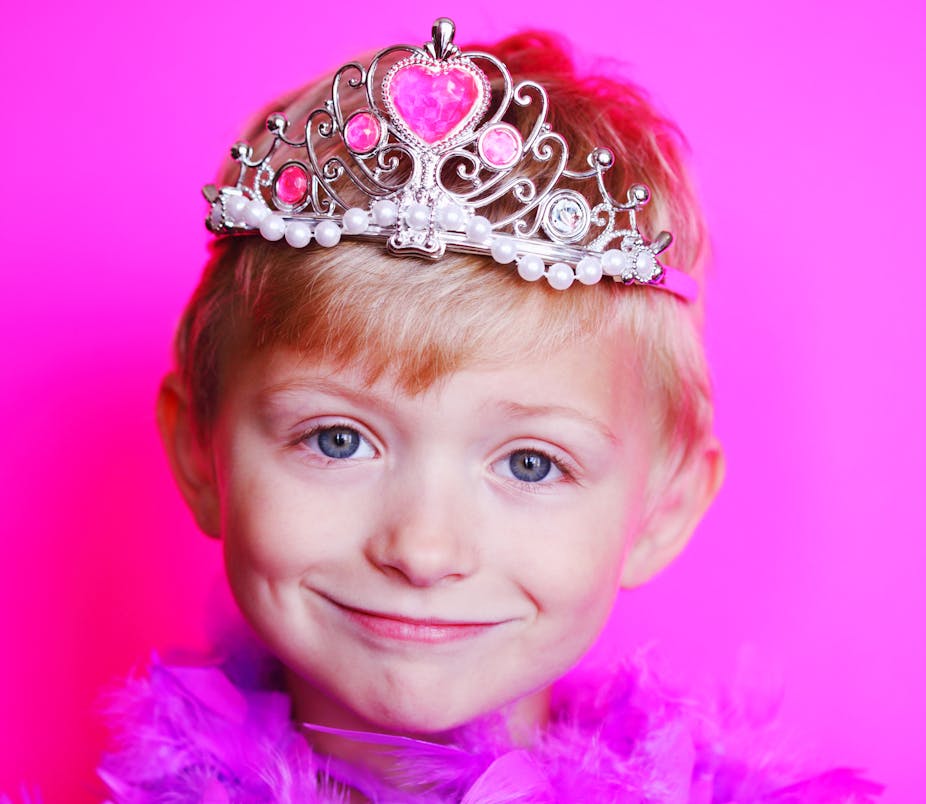An increasing number of Australian children are accessing specialist health services for gender dysphoria treatment, largely because of a growing awareness among doctors about available specialist health services. But the law is not in step with the needs of these children.
Gender dysphoria is when a person’s subjectively felt gender is incongruent with her or his biological sex. For diagnosis in children, that person must not just experience this incongruence for at least six months, they must also verbalise it.
Recent legal developments are a step in the right direction, but further review of the law is needed as the current process remains burdensome for children with gender dysphoria and their families.
Two-staged treatment
The psychological impact of gender dysphoria can be profound, particularly when puberty starts in the child’s biological sex. It’s common for people with the condition to have psychological symptoms including anxiety and depression, to self-harm and to have suicidal ideation.
Treatment is in two stages and starts with a multidisciplinary team of health professionals determining that hormone treatment should be administered.
The first stage involves giving the child puberty blockers at around ten or 11 years of age. This stops further pubertal development, which alleviates the psychological distress caused by the onset of puberty in the child’s biological sex.
This treatment is reversible. What it essentially does is buy time while the child continues to receive psychological support. If gender dysphoria desists at any point during this treatment, it can be stopped and puberty will continue.
If the child’s gender dysphoria persists, a second stage of hormone treatment can start, usually at around 16 years of age. This stage involves the administration of cross-gender hormones to encourage physical changes in the child’s body that align with her or his subjectively experienced gender.
This second stage of treatment is more serious than the first, as it is irreversible and carries significant risks, including impairment of fertility.
Changing laws
In 2004, the Family Court held that both stages of hormone treatment for childhood gender dysphoria are a type of “special” medical procedure that only a court could authorise. This decision was based on principles outlined by the High Court in an earlier decision that determined parents cannot consent to a medical procedure for their child if it is non-therapeutic, grave and carries irreversible consequences.
Then, in the 2013 case of Re Jamie, the Full Court of the Family Court held that stage one treatment, which prevents pubertal development in the child’s biological sex, does not require court approval. But it was held that stage two treatment must be authorised by the court.
In cases where the child appears to be of sufficient maturity and understanding to make her or his own decisions (a concept known in law as “Gillick competency”), the court must determine the child’s capacity for decision-making. Stage two treatment, in other words, always requires the involvement of the court.
Although these legal changes are positive compared to the previous position, the law remains potentially obstructive. Only 16 cases of gender dysphoria have so far been determined by the Family Court. Ten of these were decided in 2013 and 2014.
But referral rates to specialists for the treatment of gender dysphoria in children have been increasing significantly. Annual referral numbers are not available, but a youth worker who is himself a transgender man told the ABC in July 2014 that:
In 2013, the Royal Children’s Hospital saw the same number of young people in that one year than the previous ten years combined.
The Royal Children’s Hospital expects a 50% increase by the end of 2014.
Need for ongoing reform
Given the high rates of self-harm and suicide for children affected by gender dysphoria, especially when they lack access to treatment, the current situation is a cause for concern.
Responsibility for obtaining a court order for treatment rests with the child’s parents or legal guardians. In most cases, the family must bear the cost of the legal process, which can be significant at A$20,000 or more. What’s more, navigating through the process is stressful for both the parents and the child. So, it’s not surprising that some families choose not to pursue hormone treatment.
The burden of the legal process may inadvertently encourage young people to independently seek hormones from sources outside Australia, so they can self-administer, without medical supervision or court authorisation.
Some families may choose to continue puberty blockers to delay cross-gender hormone treatment until the child turns 18 and can provide lawful consent for their own treatment. But the risks associated with the prolonged use of puberty blockers are not fully understood. They might include a risk to the child’s bone development and an increased risk of osteoporosis.
The law in this field is intended to safeguard the welfare of children, but it seems to be failing them; the chief justice of the Family Court has openly acknowledged that the law needs review. Any such review couldn’t come soon enough and should consider the potential harm that might befall children and families if they cannot comply with the burdensome legal process.

